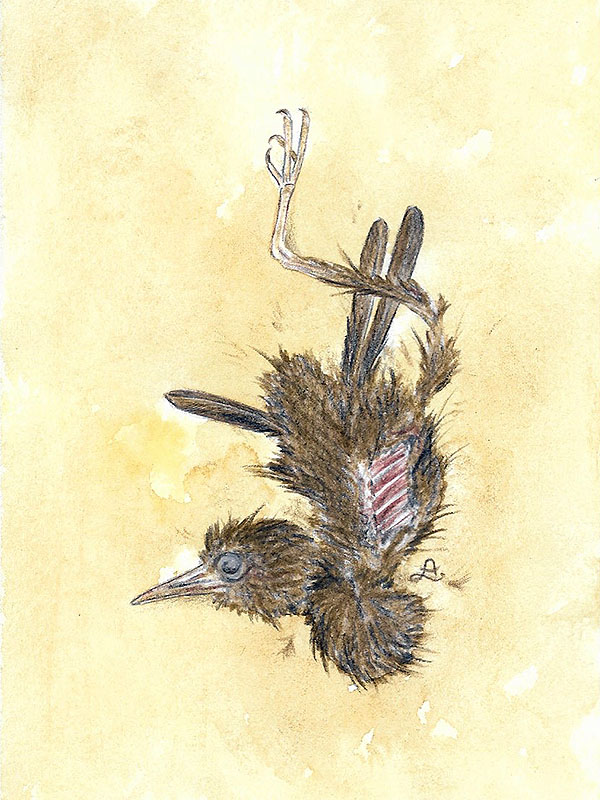
*********************
bearbeitet: 08.03.2023


*********************
bearbeitet: 08.03.2023
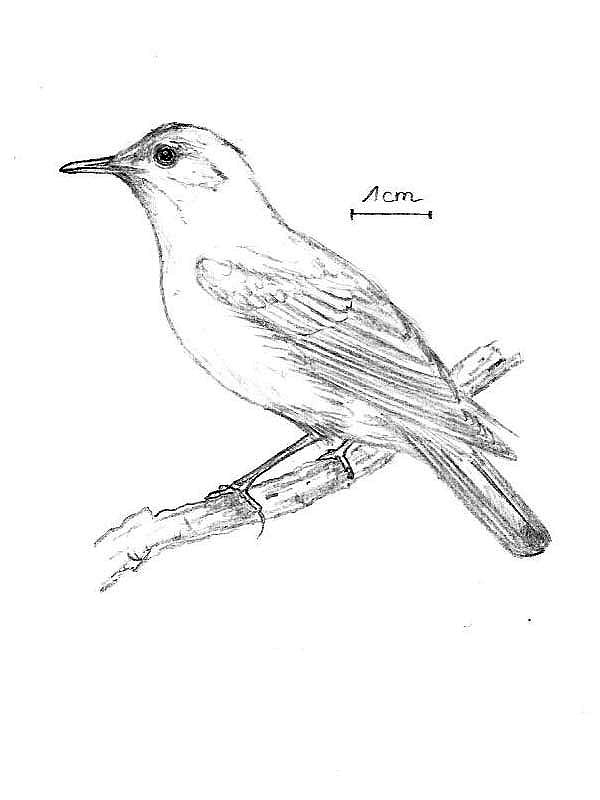
*********************
bearbeitet: 08.03.2023
This is a small bird from the Eocene of Wyoming, USA, it was only about 10 cm long and is so far known from a complete skeleton with most of the feathers preserved as well.
The bird is not yet described but is apparently currently under study, it may turn out to be related to Morsoravis sedilis Bertelli, Lindow, Dyke & Chiappe, and to belong into a new family, probably named the Morsorornithidae or alike, which then again are perhaps somehow related to the mousebird/parrot/songbird ‘orbit’.
The reconstruction shows it while somewhat stretching its left wing, it was ‘fun’ to draw all this wing feathers, and I probably will do that NEVER EVER AGAIN!!! 😉
*********************

*********************
A little update here:
This bird is now apparently included into the genus Morsoravis. [2]
*********************
References:
[1] Lance Grande: The Lost World of Fossil Lake: Snapshots from Deep Time. University of Chicago Press 2013
[2] Daniel T. Ksepka; Lance Grande; Gerald Mayr: Oldest finch-beaked birds reveal parallel ecological radiations in the earliest evolution of passerines. Current Evolution 29(4): 657-663. 2019
*********************
edited: 07.12.2019
Pumiliornis means as much as “dwarf bird”, and with that, all has been said.
***
No, not so fast ….
The genus/species was described in 1999 and is, to my knowledge, so far known from three skeletal finds, of which one even contains the remains of its last meal, namely pollen.
All in all, Pumiliornis tessellatus resembled today’s sunbirds (Nectariniidae) or the sunbird-asitys (Eurylaimidae) in being very small and having an elongated beak. Its beak, however, was quite unlike those of the members of the beforementioned two families, it resembled the beak of a plover (Charadriidae), especially its narial opening (nose hole), which was rather slit-like and not round.
Pumiliornis was apparently a flower-visitor that fed on nectar and pollen (as is known from the content of the gut of one specimen), however, it may not have been specialized to that diet and may also have taken insects and other small invertebrates.

The bird was small, very small, in my reconstruction it reaches a length of only 7,5 cm, this size, however, is of course depending on the length of its tail feathers, which unfortunately are not preserved in any of the known specimens. I’ve reconstructed the bird with a rather short tail, which may some day turn out to be completely wrong, who knows.
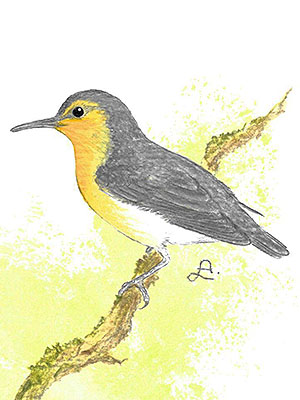
The feet corresponded to the typical scheme of recent passerine birds, i.e. they have three toes pointed forward and one towards the back. However, the feet appear to have been facultative or semi-zygodactyl, which in turn means, in simple terms, the first toe usually pointed forwards, but could be held backward when needed.
***
The genus/species originally could not be assigned to any living bird family, not even an order, but is now known to belong to the extended Passeriformes-orbit, which in addition to the passerine birds also includes the falcons (Falconiformes) and the parrots (Psittaciformes). It is now known to have been a member of the extinct family Psittacopedidae Morsoravidae, that apparently also contains other unusual genera like Morsoravis, Psittacopes and the recently described, very interesting Eofringillirostrum and probably others too.
***
Finally, it should be mentioned that this bird was not a dwarf spoonbill, as claimed by a certain person. 😉
*********************
References:
[1] Gerald Mayr: Pumiliornis tessellatus n. gen. n. sp., a new enigmatic bird from the Middle Eocene of Grube Messel (Hessen, Germany). Courier Forschungsinstitut Senckenberg. 216: 75-83. 1999
[2] Daniel T. Ksepka; Lance Grande; Gerald Mayr: Oldest finch-beaked birds reveal parallel ecological radiations in the earliest evolution of Passerines. Current Biology 29: 1-7. 2019
*********************
edited: 08.02.2019
This bird was described in 2010, it was then thought to be somehow related to the Charadriiformes respectively to the Charadriiformes “orbit”, later it was assumed to belong in some kind of relationship with other likewise “well-known” birds like Eocuculus cherpinae (Chandler), or Pumiliornis tessellatus Mayr.
The reconstruction shows a tiny bird, some 12 cm long, with a sharp-pointed beak and a quite long neck, such a bird would have needed long tail feathers to stabilize its body – so I just gave it a long tail, cause the feathers are not preserved in the Fur Formation birds.
***
So here is how all begins, some cut-out bone drawings put together, lines made with a pencil etc..:
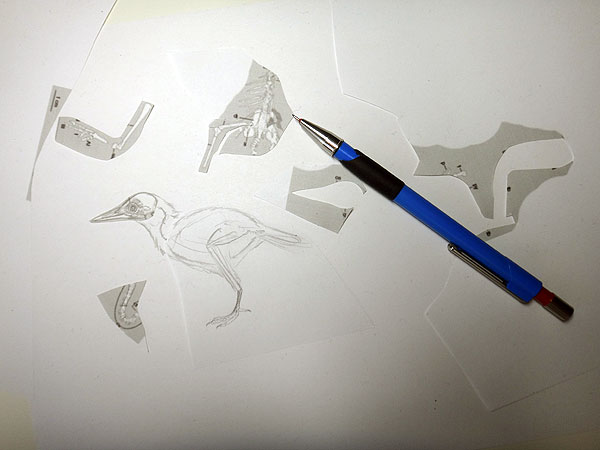
The final result is a quite life-like bird, maybe I got enough time to make a real painting, with colors and so on ….:
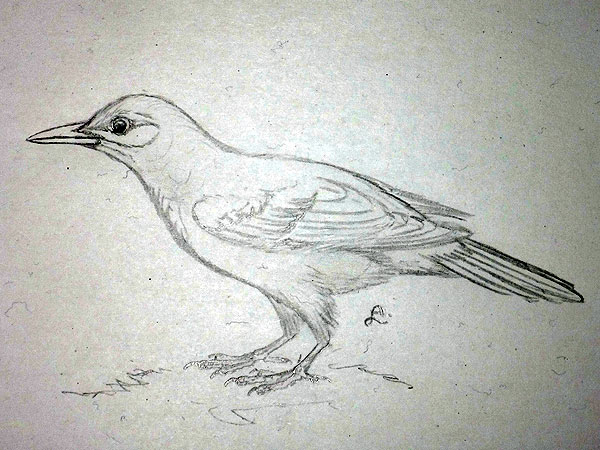
*********************
References:
[1] Sara Bertelli; Bent K. Lindow; Gareth J. Dyke; Luis M. Chiappe: A well-preserved ‘charadriform-like’ fossil bird from the Early Eocene Fur Formation of Denmark. Paleontology 53(3): 507-531. 2010
[2] Gerald Mayr: On the osteology and phylogenetic affinitis of Morsoravis sedilis (Aves) from the early Eocene Fur Formation of Denmark. Bulletin of the Geological Society of Denmark 59: 23-35. 2011
*********************
edited: 22.01.2018